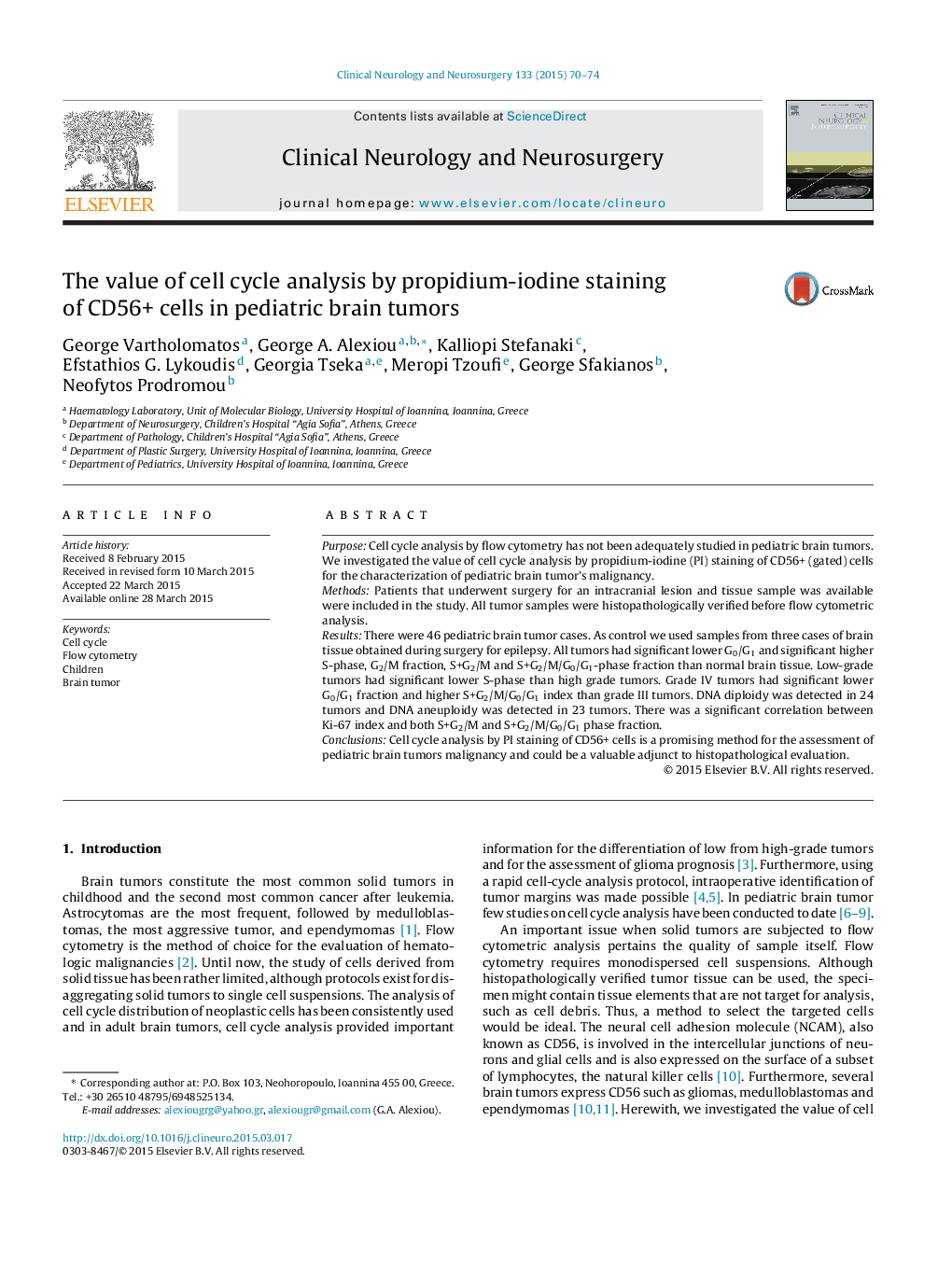| Article ID | Journal | Published Year | Pages | File Type |
|---|---|---|---|---|
| 3039881 | Clinical Neurology and Neurosurgery | 2015 | 5 Pages |
•Cell cycle analysis by PI staining of CD56+ cells can diminish the unwanted analysis of non-target tissue elements.•PI staining of CD56+ can differentiate high-grade from the low-grade brain tumors.•S+G2/M-phase fraction and proliferation index correlated with tumor's Ki-67 index.
PurposeCell cycle analysis by flow cytometry has not been adequately studied in pediatric brain tumors. We investigated the value of cell cycle analysis by propidium-iodine (PI) staining of CD56+ (gated) cells for the characterization of pediatric brain tumor's malignancy.MethodsPatients that underwent surgery for an intracranial lesion and tissue sample was available were included in the study. All tumor samples were histopathologically verified before flow cytometric analysis.ResultsThere were 46 pediatric brain tumor cases. As control we used samples from three cases of brain tissue obtained during surgery for epilepsy. All tumors had significant lower G0/G1 and significant higher S-phase, G2/M fraction, S+G2/M and S+G2/M/G0/G1-phase fraction than normal brain tissue. Low-grade tumors had significant lower S-phase than high grade tumors. Grade IV tumors had significant lower G0/G1 fraction and higher S+G2/M/G0/G1 index than grade III tumors. DNA diploidy was detected in 24 tumors and DNA aneuploidy was detected in 23 tumors. There was a significant correlation between Ki-67 index and both S+G2/M and S+G2/M/G0/G1 phase fraction.ConclusionsCell cycle analysis by PI staining of CD56+ cells is a promising method for the assessment of pediatric brain tumors malignancy and could be a valuable adjunct to histopathological evaluation.
